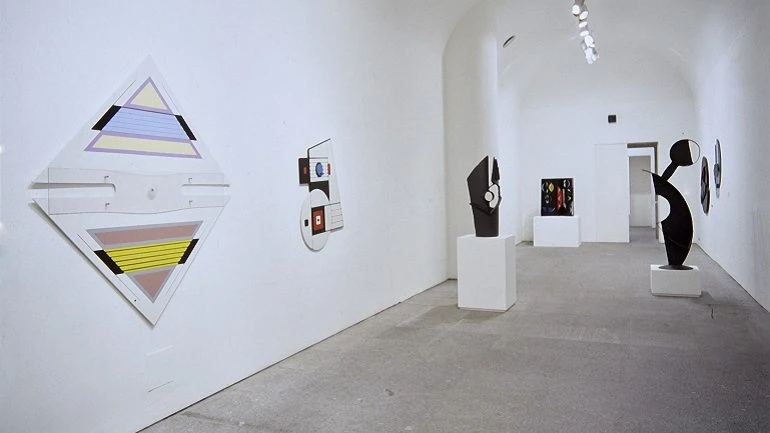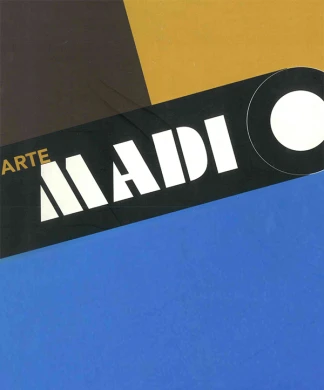Arte MADI

MADI is founded in 1945 and at the same time a new avenue opens up within it: Concrete-Invention Art, led by Kosice. Their final split (1948), triggered by the dilemma of objectives -participate in an own and Latin American modernity from abstract mechanistic principles or align with the European Concrete Art movement- promotes an international expansion of Madism. Arden Quin moves to Paris (1948), the city becomes the main European scene for the diffusion and reception of MADI art. There he establishes the Centre d'Etudes et de Recherches madistes (1951-1958) and implements a creative workshop and debates on the principles of geometric art, "White Art" in the words of Borràs, a kind of "timid minimalism avant la lettre that consists of using light effects from a white surface to obtain maximum colour intensity." It also integrates into the circles of concrete-art exhibitions then in vogue: the Salon des Realités Nouvelles and Galerie Denise René.
This exhibition aims to show the history of the MADI movement, plural and active fifty years after its foundation; for this Maria Lluïsa Borràs has established three different moments that structure the sections which divide the exhibition: "The origins of MADI", "MADI in the Southern Cone and the Caribbean and MADI in Paris", and "MADI Current International Events", the latter section brings together works by MADI artists (or artists close to their ideology) from Italy, Belgium, Hungary, the United States and Spain, as well as Argentina and France.
Artists
Museo de Arte Extremeño e Iberoamericano, Badajoz (7 November, 1997 - 11 January, 1998)
Organised by
Museo Nacional Centro de Arte Reina Sofía
Image gallery

Itinerary
Museo Nacional Centro de Arte Reina Sofía, Madrid
1 July, 1997 - 20 October, 1997
Museo Extremeño e Iberoamericano de Arte Contemporáneo, Badajoz
7 November, 1997 - 11 January, 1998
